Udon noodles are thick Japanese noodles of wheat flour, water, and salt. They are eaten hot and cold, in soups or with a simple garnish, and enjoyed year-round.
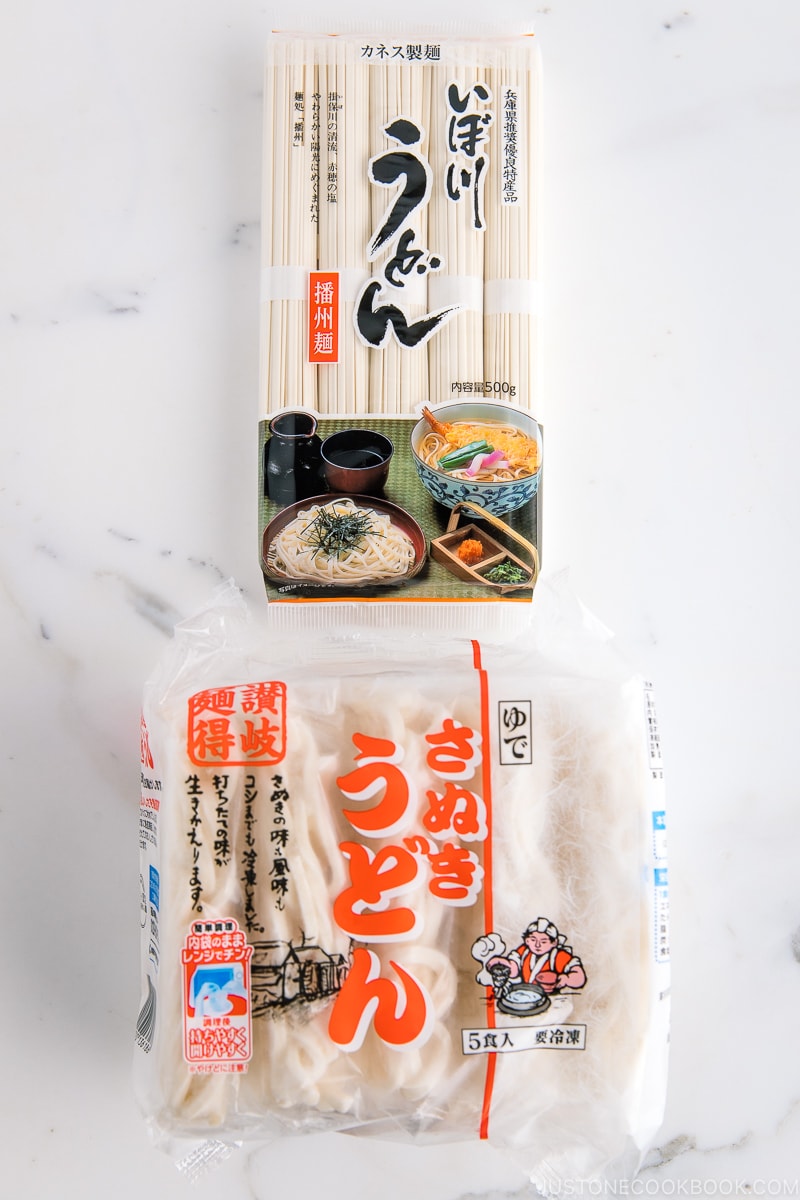
Udon (うどん) is a thick noodle made with three ingredients: wheat flour, water, and salt. Recognized for its chewy texture and creamy white appearance, udon is served in a hot broth as a noodle soup, in a thick curry sauce, pan-fried with protein, or enjoyed cold with a dipping sauce.
It is one of the most popular styles of Japanese noodles, along with soba, ramen, and somen.
Table of contents
What Is Udon
Udon is a wheat-based noodle. Although it is thicker than other Japanese noodles, it is gentle on the stomach and goes down the throat smoothly, an attribute the Japanese call nodogoshi ga ii (喉越しが良い). High-quality udon should be smooth yet have a bouncy and elastic character.
Because of its mild flavor and ability to complement other flavors, you can enjoy udon in countless ways. Be it a simple broth, light dressing, Japanese curry, stir-fried, or Western-style gravy, it is delicious no matter how you prepare it.
As it’s easy to digest and the dashi broth is light (unlike ramen, which can be on the oily side), the Japanese often eat it when they feel under the weather or aren’t too hungry.
What Does It Taste Like
It has a mild flavor with a springy, doughy texture. Depending on the style, some are thin and flat, and others are thicker with a chewier texture.
Regional Styles
In addition to the typical udon, there are regional styles, ranging from preparation, thickness, shape, and soup base. Here are two of the many regional types of udon.
Sanuki Udon (讃岐うどん)
Known as the “Capital of Udon” (うどん県), Kagawa prefecture is most famous for Sanuki udon (讃岐 is the feudal name of present-day Kawaga). The handmade noodles are made with high-quality wheat and are prepared in the same method passed down for generations.
Described for having koshi (コシ) or a bite (although not entirely al dente), people from all over Japan visit Kagawa for their famed udon. In Kagawa, over 900 udon shops offer myriad udon to compete for your appetite. If you get a chance, it is worth paying for a pilgrimage to this udon prefecture.
Inaniwa Udon (稲庭うどん)
These thin and flat noodles hailing from Akita prefecture are udon noodles. While not as light as somen noodles, the noodles cook quickly and are soft and chewy when cooked.
Ise Udon (伊勢うどん)
Thought all udon was chewy and bouncy? Well, not Ise Udon, these extra thick and extra soft noodles. The noodles are cooked until very soft, seasoned with tamari (a regional soy sauce), a dashi base of katsuobushi and iriko, and garnished with chopped green onion. It became a popular dish for tourists visiting Ise Shrine, Japan’s most sacred Shinto shrine.
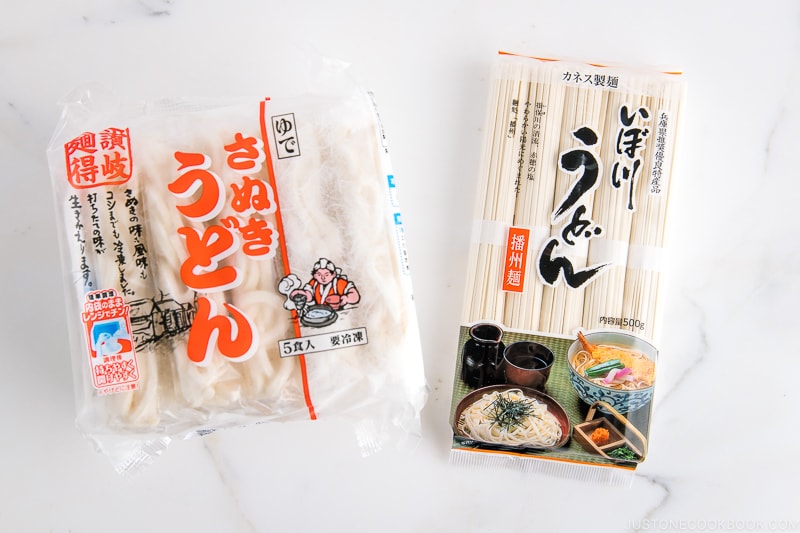
Origin of Udon
Like soba, udon came to Japan from China around the Nara period (710-794). Records show that it was first made in the shape of a slightly flattened rice cake, like a dumpling. It was a high-class food enjoyed by the upper class.
Only later in the Edo period (1603-1867) was the elongated shape invented and enjoyed by everyone.
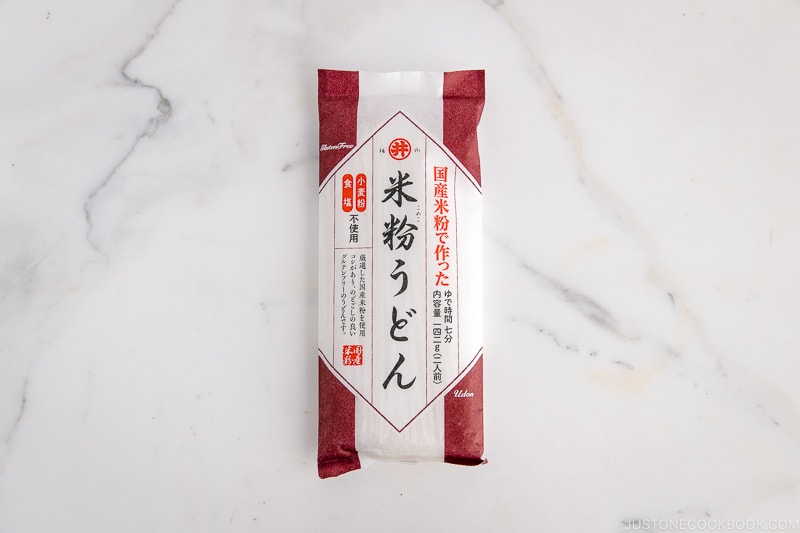
The Differences Between Udon Noodles and Soba Noodles
The main difference between the two is the ingredients. Udon is wheat-based, and soba is made from buckwheat flour or a combination of buckwheat and wheat flour. Therefore, they taste and look different.
The Japanese eat both noodles in similar styles, from hot soups to stir-fries to cold dishes.
🍜 Read What is the Difference Between Soba and Udon Noodles to learn more.
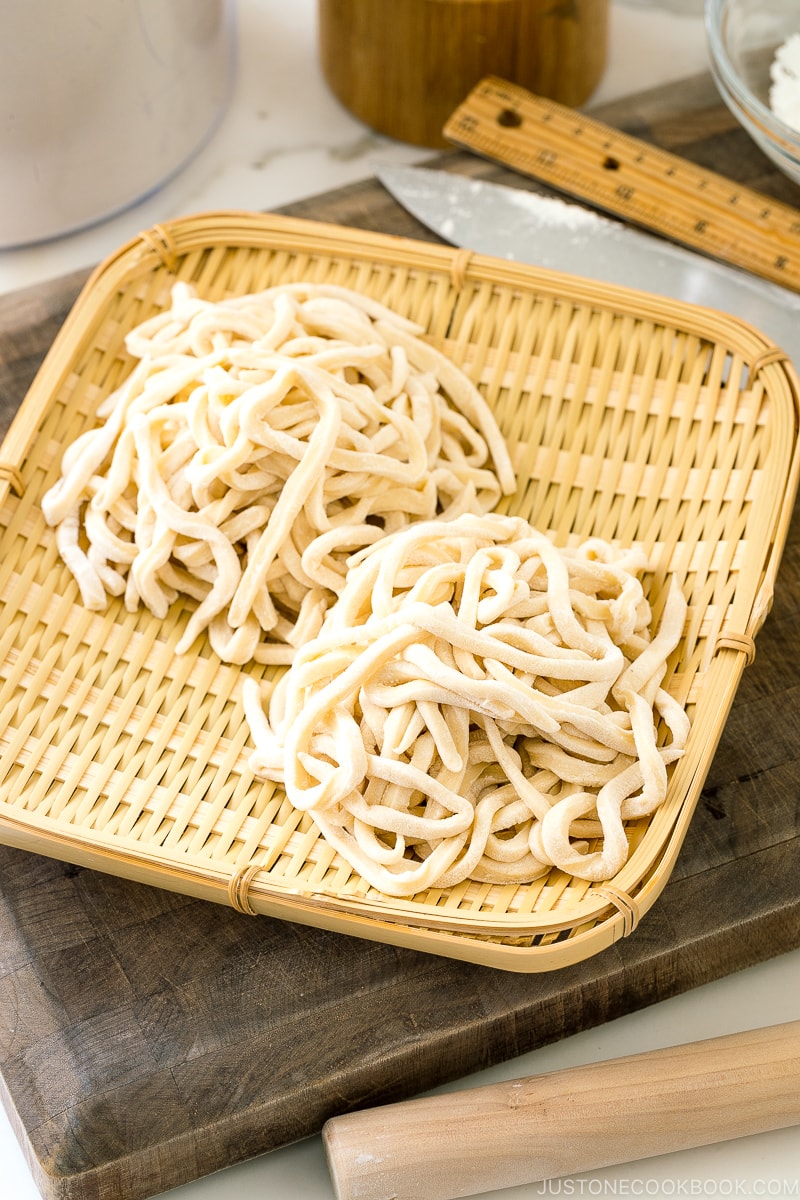
How To Use
Whether cooking frozen or dried udon, cooking it in a large pot of water is essential to prevent the noodles from sticking.
Frozen udon noodles only need a minute or two to cook. Follow the package and add the noodles to a large pot of boiling water. Gently shake the clump to loosen the noodles. Once it’s done, drain well.
Dried noodles take much longer, up to 10 minutes. Don’t overcook it if you plan to stir fry or add it to soups. Once the noodles are cooked, rinse in cold water to cool down.
Unlike soba or somen, udon holds well in stir-fries. Toss with sesame oil after draining the noodles to avoid clumping. You can load it with vegetables, eggs, tofu, chicken, tempura, or shrimp. To add spice, sprinkle shichimi togarashi or ichimi togarashi to taste.
Recipes Using Udon
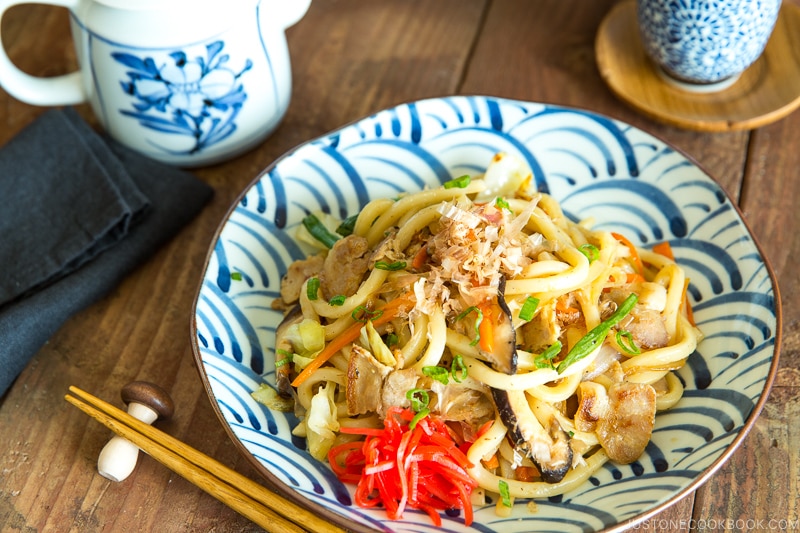
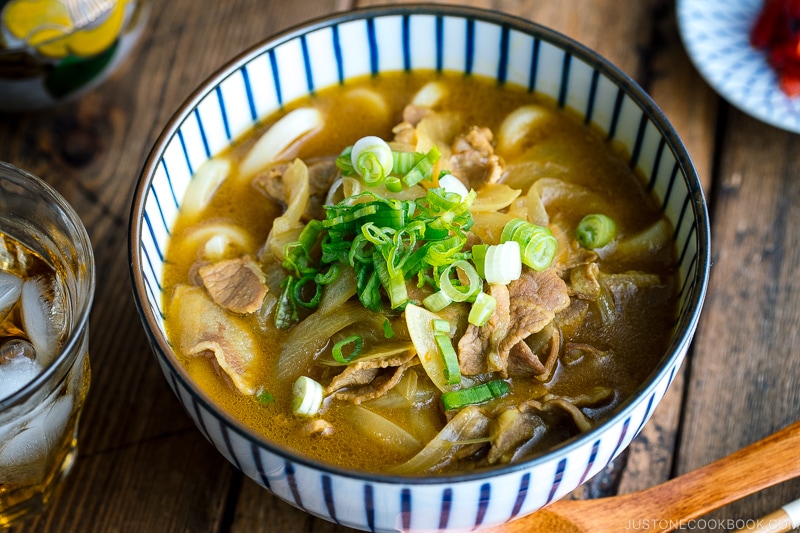
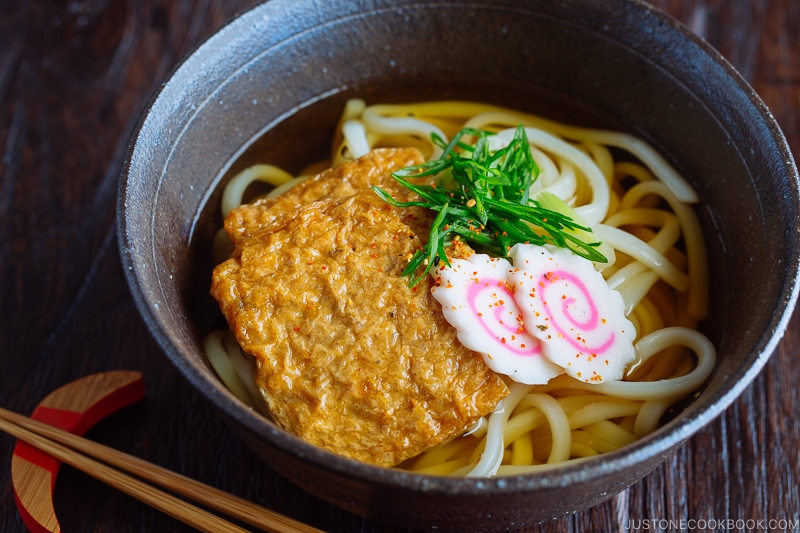
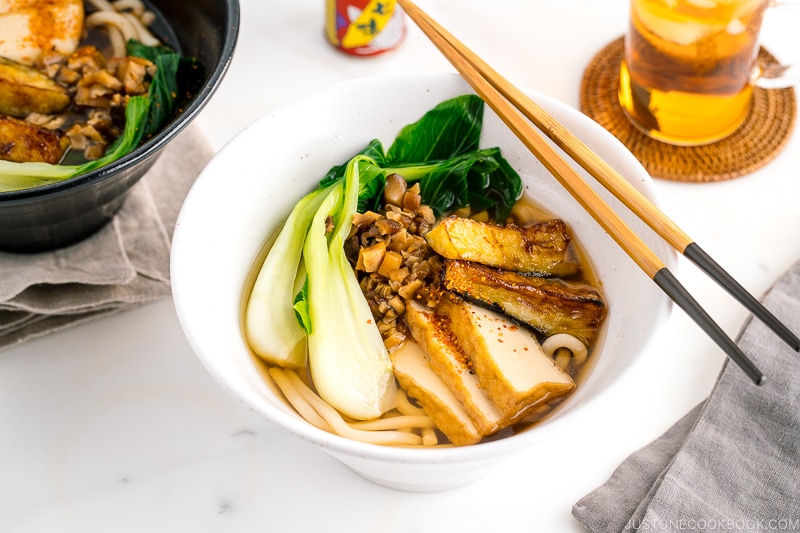

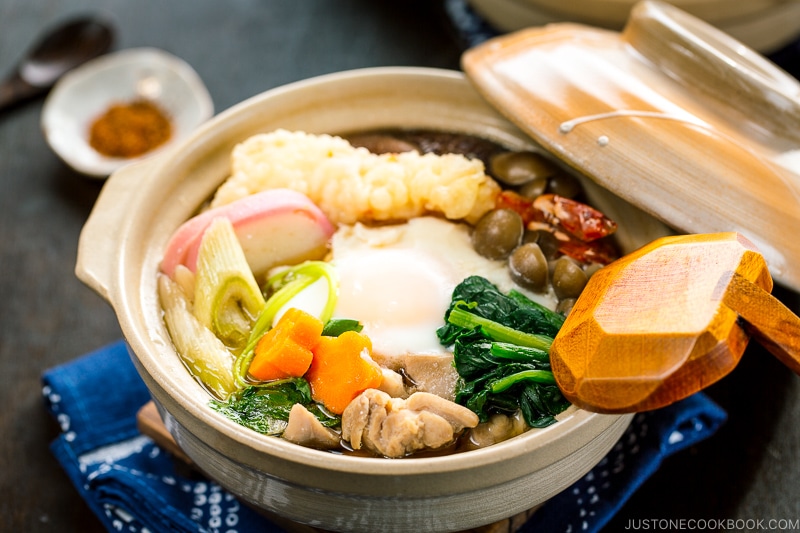
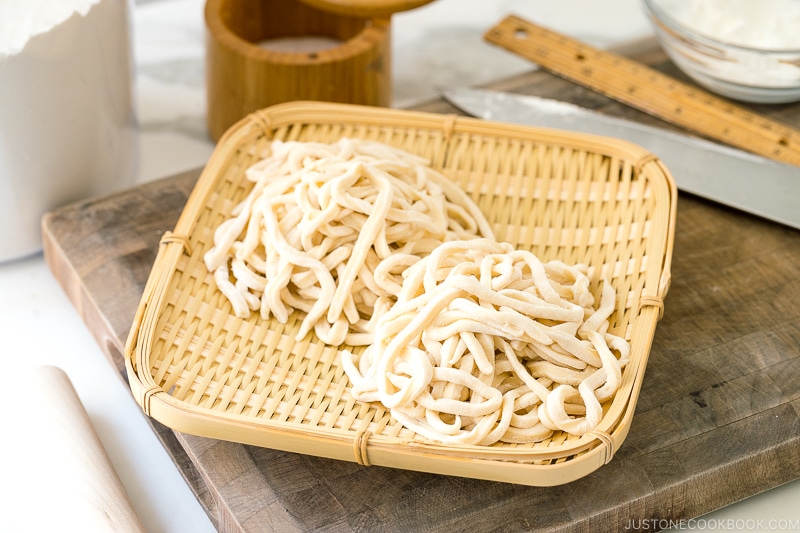
Where To Buy
I recommend Sanuki Udon from the frozen aisle at Japanese or Asian grocery stores. Alternatively, dried udon is more widely available—Hime Dried Udon is a decent option and can be found on Amazon.
You can also make Homemade Udon Noodles from scratch! All you need is all-purpose flour, salt, and water.
How To Store
Store dried noodles in a pantry, away from moisture and humidity. Keep leftover cooked noodles in an airtight container in the refrigerator and consume them within a few days. To reheat, warm up in a microwave or transfer the leftovers to a bowl and pour hot dashi.
Wish to learn more about Japanese cooking? Sign up for our free newsletter to receive cooking tips & recipe updates! And stay in touch with me on Facebook, Pinterest, YouTube, and Instagram.



